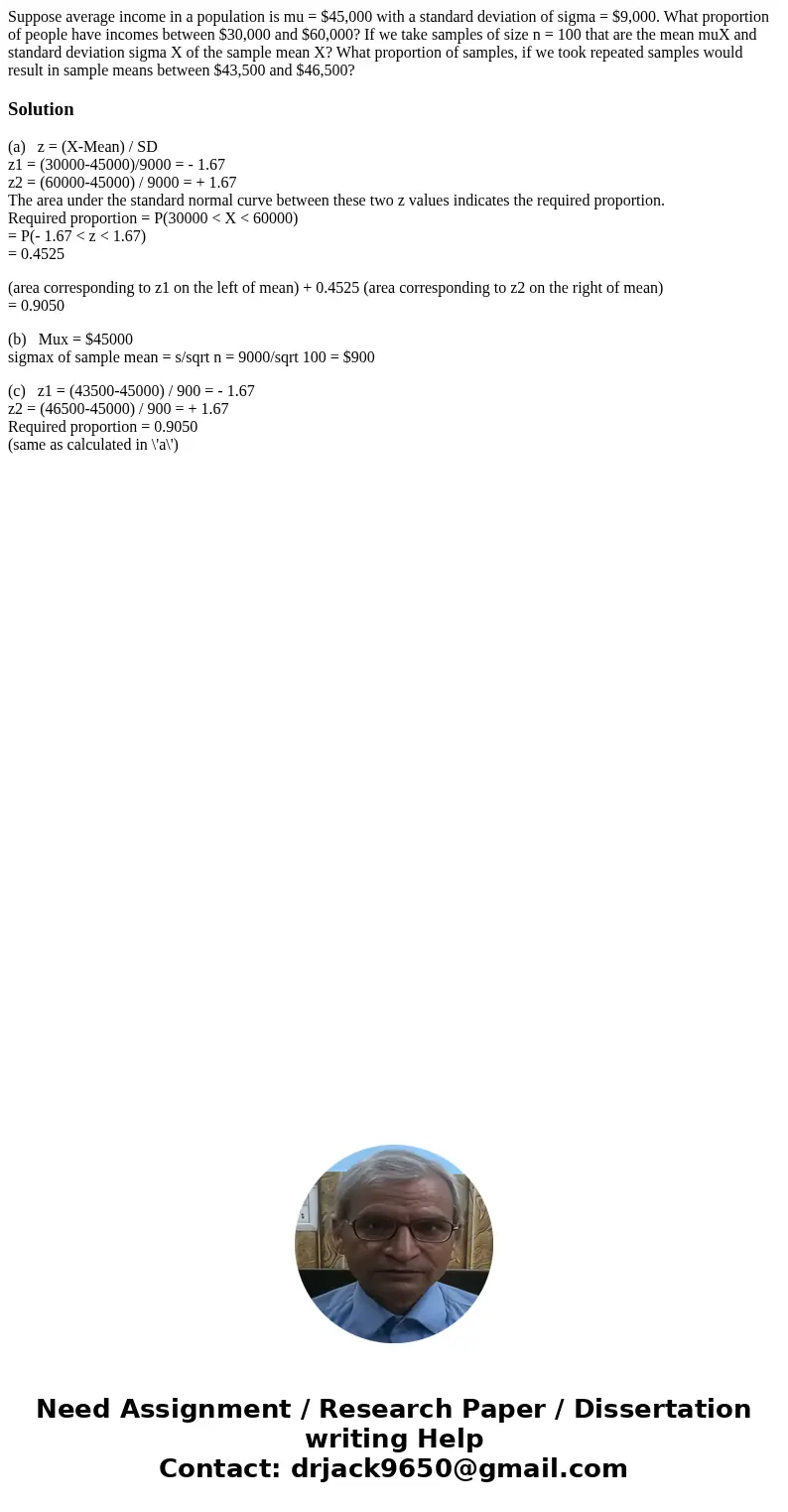Suppose average income in a population is mu 45000 with a s
Suppose average income in a population is mu = $45,000 with a standard deviation of sigma = $9,000. What proportion of people have incomes between $30,000 and $60,000? If we take samples of size n = 100 that are the mean muX and standard deviation sigma X of the sample mean X? What proportion of samples, if we took repeated samples would result in sample means between $43,500 and $46,500?
Solution
(a) z = (X-Mean) / SD
z1 = (30000-45000)/9000 = - 1.67
z2 = (60000-45000) / 9000 = + 1.67
The area under the standard normal curve between these two z values indicates the required proportion.
Required proportion = P(30000 < X < 60000)
= P(- 1.67 < z < 1.67)
= 0.4525
(area corresponding to z1 on the left of mean) + 0.4525 (area corresponding to z2 on the right of mean)
= 0.9050
(b) Mux = $45000
sigmax of sample mean = s/sqrt n = 9000/sqrt 100 = $900
(c) z1 = (43500-45000) / 900 = - 1.67
z2 = (46500-45000) / 900 = + 1.67
Required proportion = 0.9050
(same as calculated in \'a\')

 Homework Sourse
Homework Sourse